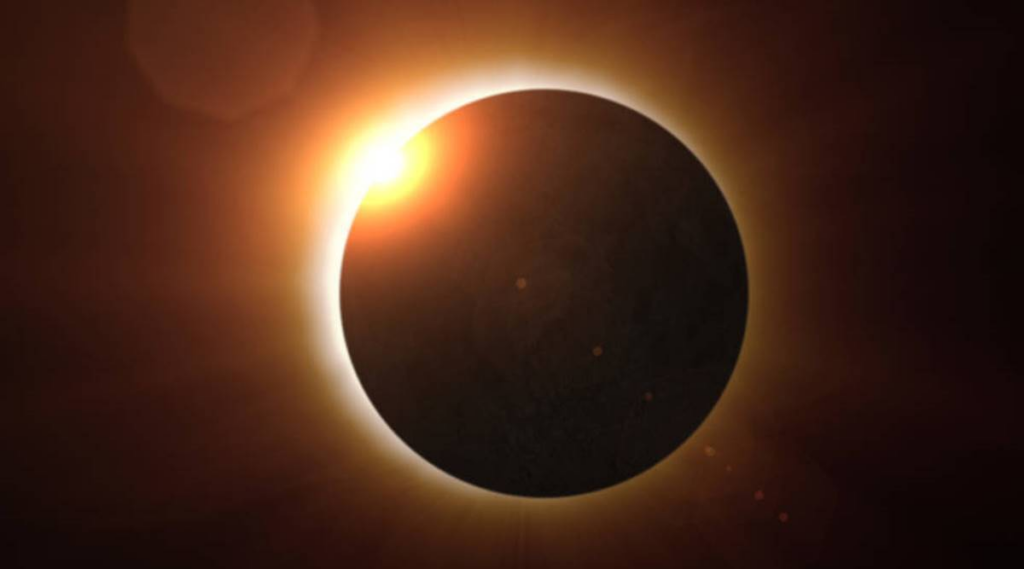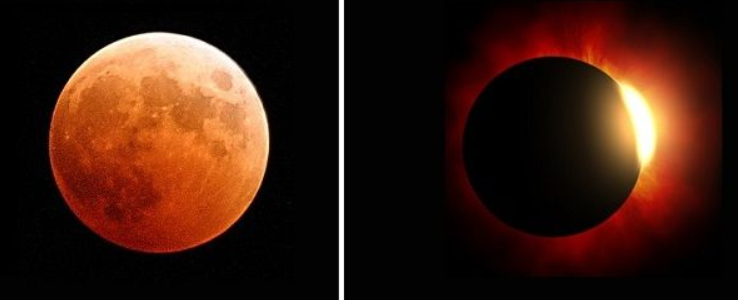On April 20, the first astronomical event of the year will occur. Ningaloo will be a hybrid solar eclipse. This year will see a total of four eclipses, including two solar eclipses and two lunar eclipses. Let’s examine the distinctions between Solar and Lunar Eclipses to better comprehend this celestial information.
What are Eclipses?
An eclipse is an astronomical phenomenon that occurs when a large object or spacecraft enters another body’s shadow or travels between that body and the observer. In contrast, a natural eclipse involves three heavenly bodies: the sun, the moon, and the earth. Solar and lunar eclipses occur when, for a limited period of time, the sun and moon are completely or partially obscured from view.
Solar Eclipse (Surya Grahan)
Only during the new moon phase, when the Moon rests between the Earth and the Sun, do solar eclipses occur. During a solar eclipse, the Moon’s shadow completely or partially obscures our view of the Sun.

Even though solar eclipses occur as frequently as lunar eclipses, they are only visible from a small portion of Earth each time, making their occurrence much less common.
Lunar Eclipse (Chandra Grahan)
Eclipses of the moon occur during the full moon phase. When Earth is precisely positioned between the Moon and the Sun, its shadow descends on the Moon’s surface, darkening it and occasionally turning it a startling shade of crimson over the course of a few hours. Each lunar eclipse is visible from half of the planet’s surface.

Solar versus Lunar Eclipse (Solar versus Lunar)
| Solar Eclipse (Surya Grahan) | Lunar Eclipse (Chandra Grahan) |
| A solar eclipse happens when the moon passes in between the earth and the sun. | A lunar eclipse occurs when the Earth moves between the moon and the sun. |
| It occurs two to five times a year. | It happens twice or thrice a year. |
| Total solar eclipses, partial solar eclipses, and annular solar eclipses are the three forms of solar eclipses. | A total lunar eclipse, a partial lunar eclipse, and a penumbral lunar eclipse are the three types of lunar eclipses. |
| Happens during the day. | It happens at night. |
| A solar eclipse occurs on the day of the new moon. | A lunar eclipse is observed on a full moon day. |
| For a few minutes during a solar eclipse, the moon partially or completely obscures the sun’s light. | The earth’s shadow partially or completely obscures the moon during a lunar eclipse. |
| It lasts approximately 5-7 minutes. | It usually lasts for an hour. |
| It is not safe to see a solar eclipse with the naked eye. To avoid eye damage, one must use protective glasses. | It is entirely safe to view a lunar eclipse with your own eyes. It does not require any protective covering to be viewed. |
As a heads-up, the impending first solar eclipse of the year is an unusual type of solar eclipse that changes from annular to total and back again as the Moon’s shadow passes over the earth’s surface. The previous hybrid solar eclipse occurred in 2013, and the subsequent one will occur in 2031. The following Hybrid Solar Eclipse will not occur until March 23, 2164.

